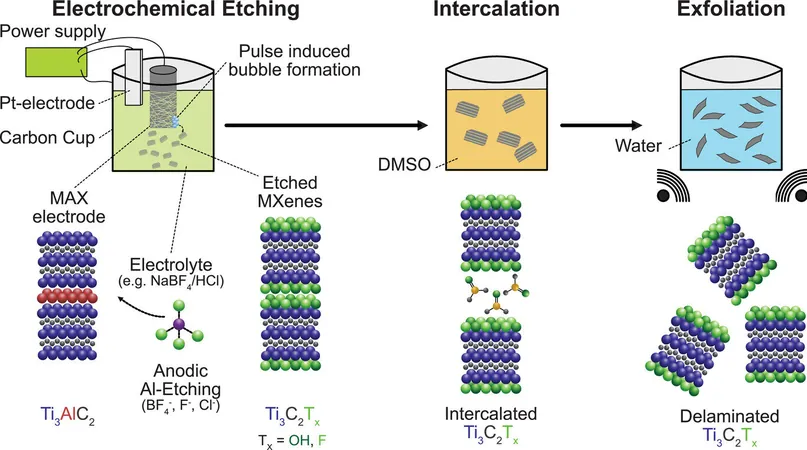
Revolutionizing MXene Production: Going Green with Electricity Over Toxic Acid!
2025-04-14
Author: Sophie
The Green Revolution in Nanomaterials
MXenes, a groundbreaking class of 2D nanomaterials, are taking the tech world by storm, promising innovations in battery technology and advanced lubricants. However, the road to their production has been fraught with toxicity—until now!
From Toxicity to Sustainability
Researchers at TU Wien have unveiled an astonishingly streamlined method to produce MXenes that eliminates the need for hazardous hydrofluoric acid. This game-changing technology utilizes electricity to create these versatile materials, marking a significant milestone in materials science.
Champions of 2D Materials
This exciting breakthrough adds to the legacy of 2D materials research, which kicked off with the discovery of graphene, a Nobel Prize-winning substance. MXenes, primarily composed of titanium and carbon, possess extraordinary properties, making them perfect candidates for applications in electromagnetic shielding, energy storage, and even cutting-edge sensors.
The Pervasive Problem of Hydrofluoric Acid
Historically, producing MXenes required the use of toxic hydrofluoric acid to etch away aluminum in precursor materials known as MAX phases—a complicated and environmentally hazardous process. "Handling hydrofluoric acid is not just tricky but also poses serious risks to health and safety," explains Pierluigi Bilotto from TU Wien. This limitation has hindered MXenes from achieving widespread use in industry.
A Spark of Innovation with Electrochemistry
Determined to find a safer alternative, Bilotto and his team turned to electrochemistry. By applying an electrical voltage, they could effectively break the aluminum bonds in the MAX phase, producing electrochemical MXenes (EC-MXenes) without the harmful side effects associated with the traditional method.
A Breakthrough Methodology
The researchers discovered that using tailored current pulses not only enhanced the production of EC-MXenes but also improved their quality. These precise pulses generate tiny hydrogen bubbles on the material's surface, helping maintain the reaction over extended periods and leading to larger yields of high-quality MXenes.









 Brasil (PT)
Brasil (PT)
 Canada (EN)
Canada (EN)
 Chile (ES)
Chile (ES)
 Česko (CS)
Česko (CS)
 대한민국 (KO)
대한민국 (KO)
 España (ES)
España (ES)
 France (FR)
France (FR)
 Hong Kong (EN)
Hong Kong (EN)
 Italia (IT)
Italia (IT)
 日本 (JA)
日本 (JA)
 Magyarország (HU)
Magyarország (HU)
 Norge (NO)
Norge (NO)
 Polska (PL)
Polska (PL)
 Schweiz (DE)
Schweiz (DE)
 Singapore (EN)
Singapore (EN)
 Sverige (SV)
Sverige (SV)
 Suomi (FI)
Suomi (FI)
 Türkiye (TR)
Türkiye (TR)
 الإمارات العربية المتحدة (AR)
الإمارات العربية المتحدة (AR)